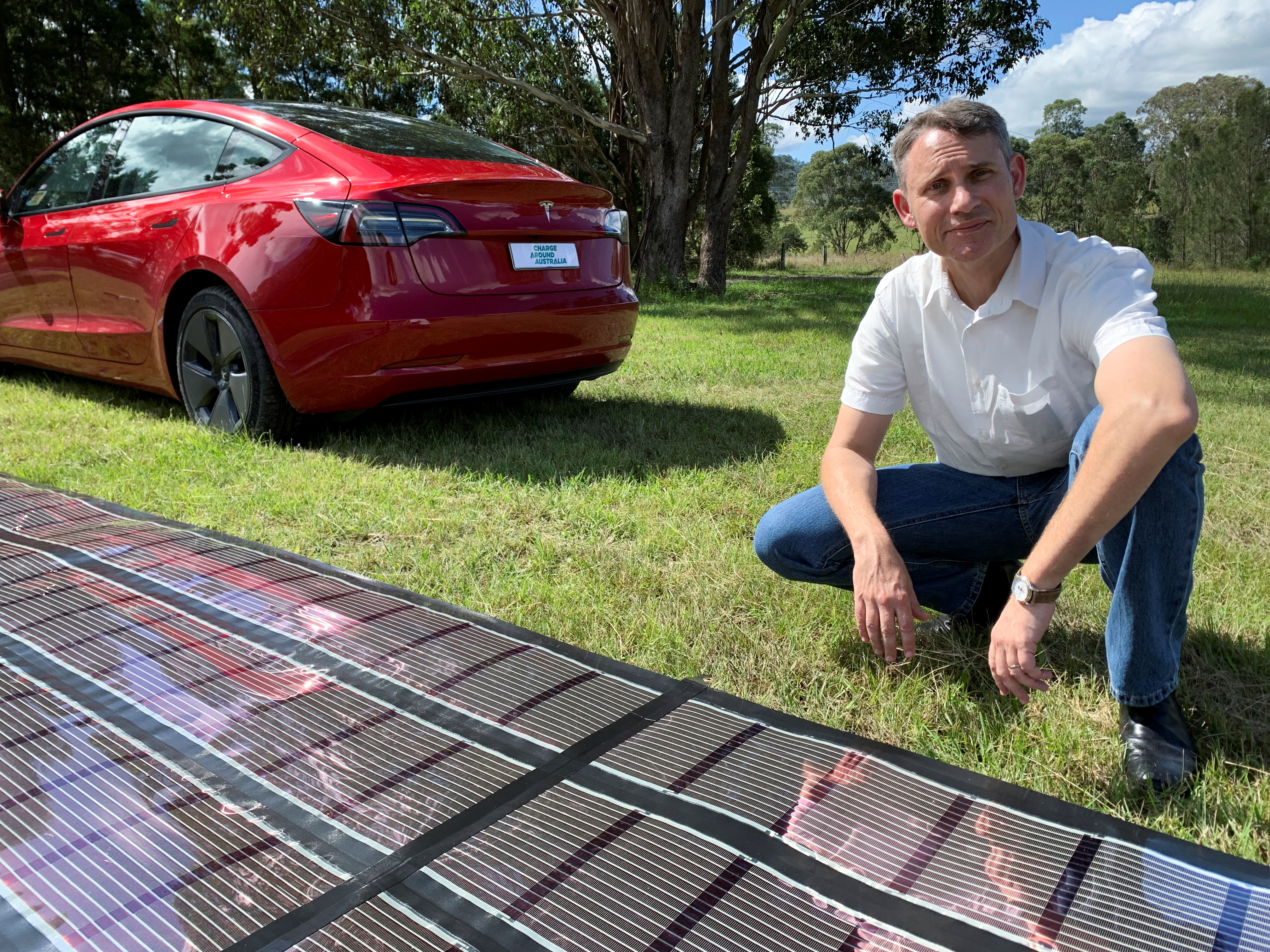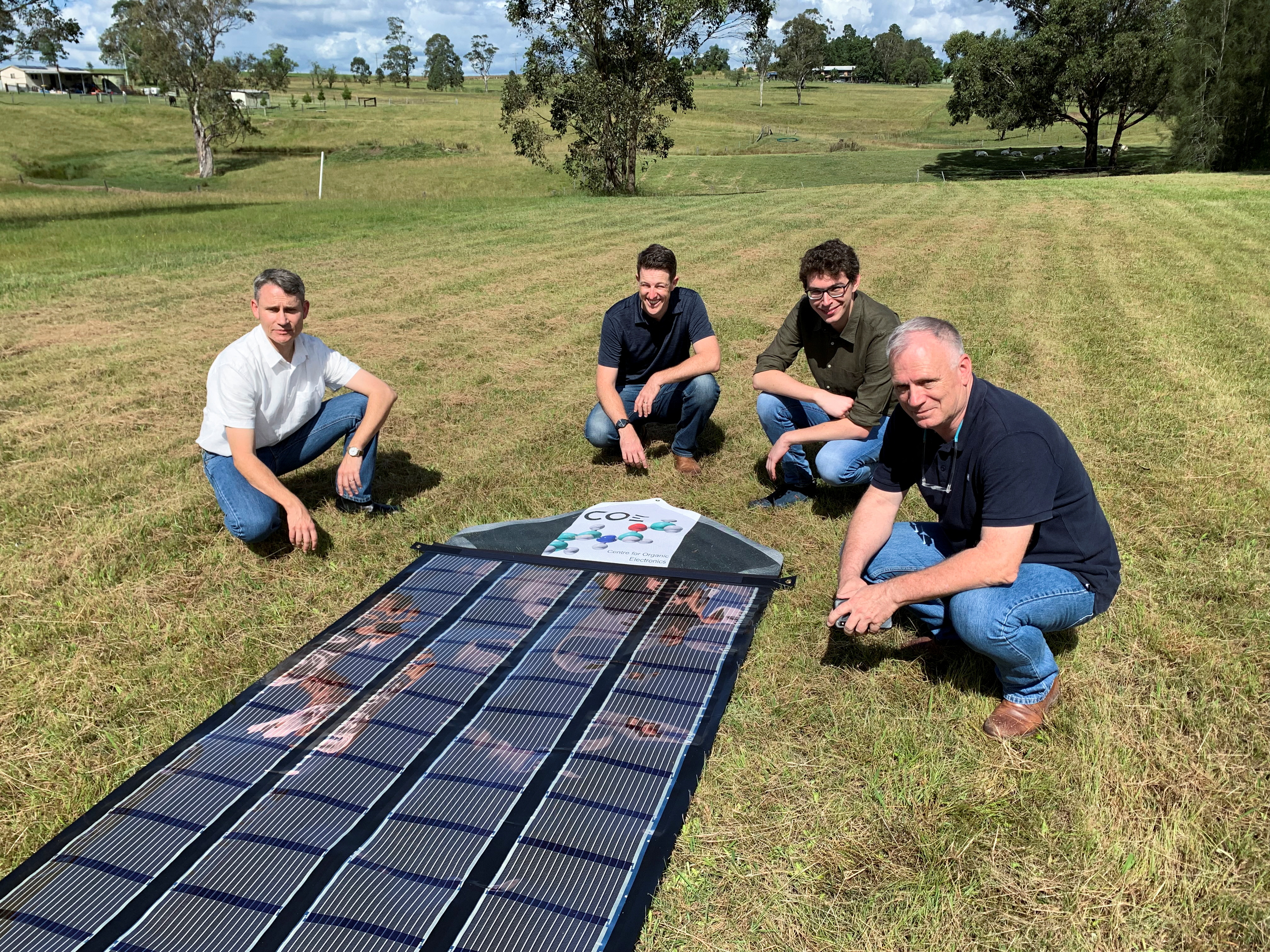
Scientists in Australia are testing out printed solar panels for powering a Tesla on a 9,400-mile trip. Here’s all about the newest way to beat climate change and the fuel crisis.
Printed solar panels: What are they and how do they work?

Printed solar panels are a lightweight and cheap method for using solar power. Producing a square meter of laminated PET plastic costs $10. They are made on commercial printers formerly made for printing wine labels. “This is actually an ideal testbed to give us information about how we would go about using and powering technology in other remote locations. For example, in space,” stated Paul Dastoor. Dastoor is the inventor of the panels.
The Change Around Australia project is planning to power a Tesla electric car with 18 printed solar panels. Each of them is 18 meters long. They will roll them out beside the vehicle as needed for the vehicle to soak up the light and charge. According to Dastoor, a team of scientists from the University of Newcastle is testing the endurance of the panels. Additionally, they are also assessing its potential performance for other applications.
More on the solar-powered Tesla trip
Additionally, as part of an 84-day journey with Tesla, the team is planning to visit around 70 schools. With this, the next generation can glimpse into the possibilities that the future holds. According to Dastoor using these panels for powering a car can help Australians to think more about how EVs can help in easing the “range anxiety”. He explained that the CAA is “showing how our innovative technology is now combining with his developments to develop new solutions for the planet”. The “community is seeking these sorts of answers to the problems it’s being presented with, day in, day out, around climate change,” he added.





